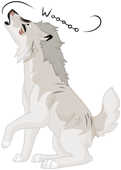Tokopedia
Drake
Description:
A fusion of creatures and molten stone, drakes are formidable foes capable of devouring almost anything.
They come in a wide range of colors, their scales often showing the influence of metal or stone, their tails layered with molten lava to provide them a deadly weapon.
Females grow significantly larger than males and often have larger, more impressive carapaces. The largest recorded Drake so far is 6.6 ft in length.The colors of a Drake’s carapace can vary from dull browns and grays like a stone to shimmery blacks and other semi-iridescent sheens.
Drake eyes seem to glow in low light, mimicking embers.
A group of Drakes is referred to as a Smolder.
Lore:
Poachers and thieves often risk great danger to try to steal an egg. The chance of success is very low, but not impossible.
The pelt of a drake is a near-fabled possession and their scales sell for a pretty penny on the black market.
The stories vary about how they got their metallic carapaces. Some suggest that they were the result of devouring everything in their paths to the point they were left with only metal and stone to eat. Others claim that it was the result of an attempt at petrifying the creatures to stop them consuming everything in their path that went wrong, and that they now stick to excessively hot places like the Lava Falls lest their scales lock into place around them. Scientists haven't managed to verify either claim.
The bond between a mated pair is thought to be one of the strongest forces known to man.
Behaviour:
Drakes are territorial creatures who control areas of precious minerals. They tend to have clear territorial lines and prioritize living near the metals and rocks that most closely match their own appearances. Larger drakes with better territories create greater and more elaborate displays for use in fighting, threatening, or even marking their territories.
It is speculated that Drakes consume stones as a form of nutrition.
Similar to birds, the drakes have a gizzard-like organ where it stores stones such as flint. When aggravated, their throats rumble, clashing the flint together until sparks mix with crushed iron, sulfide, and other minerals to erupt into a frightening burst of flame.
Drakes tend to form bonds for life, whether it be with a mate or a group.
Drakes, for the most part, are monogamous creatures and mate for life, though there has recently been evidence of partnerships between three and even four drakes at once. The mated pairs will never stray too far from each other and are extremely protective of one another.
Drakes communicate with various chirps, caws, and roars, very similar to big cats. One vocalization, the chitter, seems to be reserved for older drakes to communicate with younglings in their smolder.
Though not very trusting of people or Tokotas, the Drakes have shown some interest in things that glitter. A few handlers have reported younger Drakes sneaking off with jewelry and gems that were left unattended.
They tend to watch creatures of interest from vantage points, cautious but curious. However, once a person gets too close or stares too long, they can become defensive.
Some stealthy observers have managed to see the Drakes under the lava waterfalls for hours. It seems to be a vital habit for these creatures, and although they lower their guard during their "baths," it is discouraged to approach when near the waterfalls as they can use the boiling lava as a bullet by swinging their tail like a bat.
Despite being smaller, it is the males of the species who tend to be more aggressive and eager to pursue any foe - the females don't bother unless they assess the threat to be real. The males will pursue prey or intruder relentlessly until called off by their leader.
Domestication:Attempts have been made to tame these creatures, but have proved overwhelming to attempt. While some claim to have made progress, it's unclear if any drake has been made completely domestic.
Often, in order to appeal to a Drake, one has to have many shiny things to give as rewards as well as the ability to gain the Drake’s respect in some way.
Lifecycle:
Their large talons denote age and never stop growing as well as being hard as stone. A veteran drake will have massive claws.
They only lay one to three eggs every mating season, making the eggs extremely rare and valuable.
The parents of the eggs tend to dig as far into the earth's crust as they can to ensure the egg’s safety.
Parents build a nest near the buried eggs for when they hatch and aggressively protect the eggs. After the young have hatched, the parents take them in their mouths to guarantee their safety for the first few days. It's best to avoid them completely during this time!
Due to their intimidating stature and thick carapaces, Drakes usually have no natural predator. This contributes to their long lifespans. The oldest known Drake was recorded to be 213.
Creature compiled from contributions by Aracollie, blustone, CH-Travels, Dorkestdoodles, Ellanoire, hRhianne, IBX3, ionekta, jackdawjay, Jumperlady, Kagetora4ever, Monophobiiax, phenaroo, secretrealm, ThatDenver, Tinadactyl, WolfBound13 and the Tokotas Admin TeamCreature art by Tinadactyl

